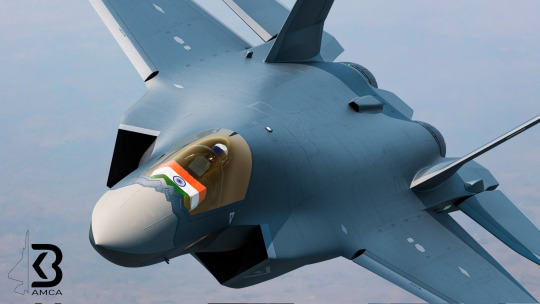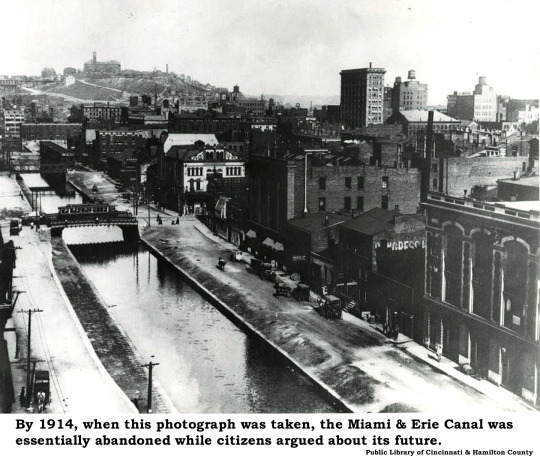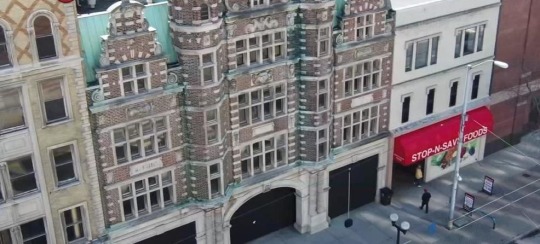#dayton commercial construction
Explore tagged Tumblr posts
Text
Guides and Tips: Hiring a Commercial Construction Contractor

A top-notch commercial construction contractor that provides pole barn building in Dayton, OH is considered an essential structure to the resident’s livelihood. Pole barns are essential because calamities often devastate the area. Without a sturdy barn, you might just go out one day and see buildings around you are no longer standing.
Hiring a professional contractor will ensure your building is constructed sturdy and solidly to overcome various calamities. However, you shouldn’t take choosing a contractor lightly. Make sure to choose professionals who are licensed and fully insured to protect the builders and yourself. You should know the top tips to hire the best commercial construction contractor to help you achieve the best pole barn building for your home. You can save money by hiring a reputable commercial contractor as they’ll also assist to upgrade your company's facility for your convenience.
0 notes
Text

India approves development of the 5ª generation 'AMCA' fighter
Fernando Valduga By Fernando Valduga 03/07/2024 - 20:03in Military
In a significant move, the Indian Cabinet Security Committee approved the fifth-generation Advanced Medium Combat Aircraft (AMCA) poaching project to be executed by the Defense Research and Development Organization (DRDO).
With an estimated cost of approximately US$ 2 billion, the project will be carried out by the Aeronautical Development Agency of the Defense Research and Development Organization. The goal is to develop poaching and its associated technologies in collaboration with several public and private sector entities. The plan includes the construction of approximately five prototypes within a period of about five years.
According to sources, the project will involve the production of the prototype by industry players, including the public sector company Hindustan Aeronautics Limited.
AMCA ??
As CCS Chaired by PM Modi Clears India Stealth Fighter Jet Program. The total Program cost would be Rs 15,000 Cr & total 5 Prototype will be built in 5 Years with first Proto Roll out in 3 Year
All the Tech required for it already built & devloped.

— Vivek Singh (@VivekSi85847001) March 7, 2024
The government has actively sought the development of national technologies in the defense sector.
The Ministry of Defense predicts that the fifth-generation aircraft project will create numerous employment opportunities and may result in substantial commercial contracts worth millions of dollars for Indian companies. This initiative is expected to generate large-scale employment opportunities.
Under the leadership of Prime Minister Narendra Modi, the Indian Air Force has significantly strengthened its support for Indian fighter aircraft projects. This is evidenced by the government's acquisition of more than 200 light combat aircraft and the approval of engines for the LCA Mark-2 project.

The introduction of the AMCA into operational functions is expected to begin after 2030. The two initial squads are planned to be equipped with GE-414 engines, while discussions are underway for the co-development of more powerful engines for the subsequent squads.
India is expected to introduce more than 200 of these advanced fifth-generation fighters, which will also contribute to the country's ability to develop future generations of jet fighters in the domestic market.
Source: ANI
Tags: Military AviationHAL - Hindustan Aeronautics LimitedHAL AMCA - Advanced Medium Combat Aircraft/Advanced Medium Combat AircraftIAF - Indian Air Force/Air Force of India
Sharing
tweet
Fernando Valduga
Fernando Valduga
Aviation photographer and pilot since 1992, he has participated in several events and air operations, such as Cruzex, AirVenture, Dayton Airshow and FIDAE. He has works published in specialized aviation magazines in Brazil and abroad. He uses Canon equipment during his photographic work in the world of aviation.
Related news
MILITARY
IMAGES: Romania organizes integrated training exercises for allied fighters
07/03/2024 - 16:00
MILITARY
AERALIS reveals common core fuselage model at DIMDEX in Doha
07/03/2024 - 14:00
FIDAE
Crews and aircraft of the Chilean Air Force will be deployed at FIDAE 2024
07/03/2024 - 13:00
BRAZILIAN AIR FORCE
FAB releases music video and documentary in honor of the C-130 Hercules
07/03/2024 - 12:00
HELICOPTERS
Germany will receive its entire new fleet of 60 CH-47F helicopters in eight years
07/03/2024 - 11:00
ARMAMENTS
USAF about to test ARRW hypersonic missile in the central Pacific
07/03/2024 - 09:30
homeMain PageEditorialsINFORMATIONeventsCooperateSpecialitiesadvertiseabout
Cavok Brazil - Digital Tchê Web Creation
Commercial
Executive
Helicopters
HISTORY
Military
Brazilian Air Force
Space
Specialities
Cavok Brazil - Digital Tchê Web Creation
6 notes
·
View notes
Text
Direct Dumpsters offers reliable dumpster rental services in Dayton, OH, and surrounding areas, providing a variety of sizes to meet your residential, commercial, and construction needs. Our prompt delivery and pickup ensure a hassle-free waste management experience, allowing you to focus on your project without worrying about disposal. Contact us today!
0 notes
Text

https://www.directdumpstersllc.com/ - You can choose from a range of roll-off dumpster sizes with Direct Dumpsters. We handle residential, commercial, and industrial waste, as well as new construction, roof tear-offs, restorations, and home and garage cleanouts in Dayton, OH, and surrounding areas. Contact us now!
0 notes
Text
Navigating the Role and Importance of a Dayton Roofer
Dayton roofers play a pivotal role in the residential and commercial property sectors. Ensuring your roofing system is reliable, durable, and efficient can significantly contribute to your buildings overall safety and value. This article delves deep into what Dayton roofers do, their indispensable services including roofing contractor responsibilities, and why it is beneficial to utilize their skills.
Critical Expertise of a Dayton Roofer:
A Dayton roofer possesses specialized knowledge and expertise in handling different types of roofs. These professionals are trained to provide comprehensive roofing solutions, from regular maintenance checks to significant repairs or replacements. Their experience with local weather conditions allows them to offer tailored advice on the best material choices that can withstand Ohios diverse climate.
Role as a Roofing Contractor:
The primary responsibility of a roofing contractor is to ensure your roofs longevity while maintaining its aesthetic appeal. They assess existing roofs, identifying areas of wear or damage before devising an appropriate action plan. Be it fixing leaks, replacing shingles or installing an entire new roof; Dayton roofing contractors see every project through from start to finish.
Major construction builds also rely on these professionals who skillfully install roofing systems for new structures. By collaborating closely with other experts involved in the build—including architects and construction managers—they ensure that all aspects are aligned from design considerations to functionality needs.
Insulation Services:
Dayton roofers also flourish as insulation contractors. A well-insulated attic plays a vital role in maintaining your home’s energy efficiency all year long—an aspect particularly important for buildings enduring Ohios freezing winters and hot summers.
Through inspecting your existing insulation condition or newly-installing proficient systems, these professionals ensure optimal thermal comfort inside your house while reducing energy usage- A win-win! Furthermore, proper insulation mitigates extensive mold growth—a common issue in poorly insulated attics—contributing greatly to the overall health of the building and its inhabitants.
Emergency Services:
The uncertainties of life often extend to your roofs. In the face of unexpected leaks or damages from severe weather conditions, Dayton roofers provide swift emergency repair services. They recognize the urgency of these situations, and through their rapid response, they can help prevent further property damage and ensure peace of mind for homeowners.
Why Invest in a Pro Dayton Roofers Services?
Utilizing professional Dayton roofer services assures you of reliable workmanship backed by warranty policies—something less likely when handling DIY roof repairs. These experts also strictly adhere to safety regulations during operations, safeguarding you from potential accidents. Moreover, through regularly scheduled maintenance checks by your trusted contractor, you eradicate extensive issues down the line that could lead to costly repairs or replacements.
Engaging Dayton roofers is not just about addressing pressing roofing issues but also investing in professional expertise that ensures a smoothly functioning roofing system—a crucial player in your homes longevity and value. From their role as attentive roofing contractors to proficient insulation experts, these professionals warrant careful consideration for securing both safety standards and aesthetic appeal for your property. Their critical functions extend beyond immediate fixing needs—they offer lasting solutions protecting your home against all odds, providing an undeniable peace of mind.
Bone Dry Roofing Dayton
Phone:(937) 739-8332
Address: 3230 Dayton Xenia Rd, Beavercreek, Ohio, 45434
#roofing companies near me#roofing company near me#roofing near me#roof repair near me#roofing repair near me
1 note
·
View note
Text
Absolute Landscape & Turf Services, Inc. is the premier landscape, design, and maintenance contractor in central Maryland for residential and commercial landscaping. We are experts in hardscapes, lighting, maintenance, landscape design and construction, and much more!
0 notes
Text
Bond Breaker Market Is Estimated To Witness High Growth Owing To Increasing Construction Activities

The global Bond Breaker Market is estimated to be valued at US$ 1.29 billion in 2023 and is expected to exhibit a CAGR of 7.5% over the forecast period (2023-2030), as highlighted in a new report published by Coherent Market Insights. Market Overview: Bond breakers are materials used in construction to prevent adhesion between surfaces and promote easy separation. They are commonly used in concrete construction to prevent bonding between freshly poured concrete and adjoining surfaces such as formwork, expansion joints, and reinforcement bars. Bond breakers provide advantages such as ease of removal, reducing the risk of damage to the concrete surface, and ensuring proper expansion and contraction of concrete structures. The need for bond breakers is associated with the increasing construction activities globally, especially in regions such as Asia Pacific and the Middle East. Market Key Trends: A key trend in the bond breaker market is the growing adoption of sustainable and eco-friendly products. With the increasing focus on environmental conservation, construction industry players are shifting towards greener alternatives. Eco-friendly bond breakers not only offer the required functionality but also contribute to reducing the carbon footprint of construction projects. Manufacturers are developing bio-based bond breakers that are free from harmful chemicals and provide effective bonding prevention. This trend is driven by regulatory policies promoting sustainable construction practices and the growing awareness among construction professionals about the environmental impact of their projects. As a result, the demand for sustainable bond breakers is expected to witness significant growth over the forecast period. PEST Analysis: Political: There are no major political factors that directly impact the bond breaker market. However, government regulations concerning construction safety and environmental impact may indirectly influence the market. Economic: The bond breaker market is expected to witness high growth during the forecast period, primarily due to the booming construction industry globally. Increasing urbanization, infrastructural development projects, and rising commercial construction activities are driving the demand for bond breakers. Social: The growing awareness about the benefits of using bond breakers in construction projects is a major social factor affecting the market. Bond breakers help in preventing the adhesion of freshly poured concrete to the adjacent surfaces, resulting in better quality and efficiency in construction. Technological: The technological advancements in the manufacturing of bond breakers have significantly improved their performance and durability. The development of eco-friendly and biodegradable bond breakers is also a noteworthy technological trend in the market. Key Takeaways: Market size: The Global Bond Breaker Market Size is expected to witness high growth, exhibiting a CAGR of 7.5% over the forecast period. This growth can be attributed to the increasing demand for bond breakers in the construction industry, especially in developing regions where infrastructural development is at its peak. Regional analysis: Asia Pacific is projected to be the fastest-growing and dominating region in the bond breaker market. The rapid urbanization, increasing population, and infrastructure development initiatives in countries like China and India are driving the demand for bond breakers in the region. Key players: The key players operating in the bond breaker market include Sika AG, BASF SE, Fosroc International Limited, Saint-Gobain Weber, The Euclid Chemical Company, Dayton Superior Corporation, WR Meadows, Specified Technologies Inc, TCC Materials, and EMSEAL Joint Systems Ltd. These companies are actively focusing on product innovation, expanding their distribution network, and strategic collaborations to gain a competitive edge in the market.
#construction#infrastructural development#Bond Breaker Market#Bond Breaker Market Insights#Bond Breaker Market Outlook#Bond Breaker Market Forecast#Bond Breaker Market Value#Bond Breaker#Coherent Market Insights
0 notes
Text
The Rise of Steel: Exploring the Advantages of Metal Buildings in Construction

Did you know that the use of steel and metal in construction is on the rise? Because of the many advantages of using metals in construction, steel buildings in Dayton, OH, are now in demand when it comes to commercial or residential property construction. This type of construction is in demand because, as a homeowner or business owner, you can gain a lot of benefits from constructing your building out of metal.
0 notes
Text

New jet coach for the Russian Air Force
Fernando Valduga By Fernando Valduga 12/28/2023 - 17:00 in Military
Russian aircraft manufacturer Mikoyan is currently developing a new single-engine jet coach, the MiG-UTS.
The aircraft will be used in the basic training of pilots and will replace the L-39 Delfin training jets, used since the 1970s.

The MiG-AT developed by Russia in the 1990s.
The new coach will be equipped with an Ivchenko-Progress AI-222-25 turbofan, delivering 24.7 kN of thrust and currently in series production in the United Engine Construction Corporation's "Salyut" production complex for the Yak-130.
During the development of the cockpit, the twin-engine MiG-AT (Advanced Trainer) jet was used, a project of which it was canceled in 1996.
Tags: Military AviationMiG-UTSMikoyan GurevichROSTECRussia
Sharing
tweet
Fernando Valduga
Fernando Valduga
Aviation photographer and pilot since 1992, he has participated in several events and air operations, such as Cruzex, AirVenture, Dayton Airshow and FIDAE. He has works published in specialized aviation magazines in Brazil and abroad. He uses Canon equipment during his photographic work in the world of aviation.
Related news
MILITARY
U.S. helicopters sink three Houthi boats in the Red Sea and shoot crew
31/12/2023 - 11:43
HELICOPTERS
MD Helicopter reveals the new platform of the military helicopter TH530/AH530
31/12/2023 - 11:00
MILITARY
Kurdish opposition in Syria is opposed to the sale of new F-16s to the Turks
30/12/2023 - 19:00
HELICOPTERS
U.S. Army will reduce UH-60 Black Hawk fleet by almost 160 units
30/12/2023 - 18:00
COMMERCIAL
First Tu-214 'restored' in airworthiness conditions again
30/12/2023 - 17:30
MILITARY
IMAGES: Luftwaffe performs "Elephant Walk" with Typhoons days before the end of the year
30/12/2023 - 15:30
4 notes
·
View notes
Text
Hire professional general contractor services in Dayton with Tech Pro Construction. We aim to satisfy our customers by offering affordable, high-quality services as per your project needs. We work with you on commercial or residential projects to offer desirable results. We take care of everything from A to Z. Contact Us to Schedule Your Appointment
0 notes
Text
17 Curious Facts About Cincinnati's Miami & Erie Canal
Of Course, Daniel Drake Thought Of It
Since he was behind almost every improvement ever contemplated in pioneer Cincinnati, it should surprise no one that Daniel Drake proposed a canal system in his 1815 book, “A Picture of Cincinnati.” Drake was, as usual, ten years ahead of his time, but his proposal closely matched the route ultimately selected when the canal was laid out in 1825.
Just The Facts
The Miami & Erie Canal extended 244 miles from Cincinnati to Toledo. Construction began in 1825 and was completed in 1845, at a total cost of $8,062,680.07. Along the route, the canal crossed 19 aqueducts and employed 106 locks. The last 10 of these locks carried barges from Court Street down to the Ohio River at Cincinnati along a channel now buried under Eggleston Avenue. The peak year for traffic was 1851, after which competition from railroads increased every year. The canal was abandoned in 1913 after a catastrophic flood in Dayton destroyed essential infrastructure.
Up & Down
Along its path, the canal climbed 395 feet upward from Lake Erie to reach its highest level. Known as the Loramie Summit, this plateau extended almost 20 miles between New Bremen to Lockington, north of Piqua, Ohio. From there, the canal descended 513 feet until it reached the Ohio River. The final 100-foot drop ran from Court Street to the Ohio River in Cincinnati.
From Barges To Superhighways
Long stretches of the Miami & Erie Canal are now traversed by automobiles, especially on I-75, U.S. Route 24, and Ohio Route 25. Automobiles were often the third vehicles to follow these routes. As the canal was abandoned, boats usually gave way at first to interurban rail lines in the 1920s and 1930s. Automobiles followed only after the Federal Aid Highway Act of 1956 funded the construction of interstate highways.
Cincinnati’s Rhine
Without the canal, there would be no Over-the-Rhine. The first references to Cincinnati’s “Little Deutschland” neighborhood as “Over-the-Rhine” appear around the time of the Civil War. Originally a put-down, the city’s German residents came to appreciate the idea that they felt more at home once they crossed over the Canal (the “Rhine”) into familiar territory.
The “Other” Canal
The Miami & Erie Canal was not the only canal serving Cincinnati. The Cincinnati & Whitewater Canal was completed in 1843 and connected Cincinnati to Indiana’s Whitewater Canal near Harrison, Ohio. This short canal was in operation for only 20 years and was converted to a railroad right-of-way after 1862. A tunnel constructed for the Cincinnati & Whitewater canal can still be seen in Cleves.
The Lakes Abide
Some of Ohio’s largest lakes were originally created to ensure a consistent flow of water for the canal. Grand Lake St. Marys was one of these feeders and was the world's largest reservoir when built. Indian Lake, originally a collection of small lakes and wetlands, was converted into a large supply basin for the canal. Along the length of the canal, smaller basins – including LeSourdsville Lake – allowed barges to turn around, dry dock, or exchange cargo.
Holy Water
A couple of local African American churches dunked converts in the Canal. One Northside church performed its rites at a location known then as Baptist Hill. The other congregation baptized a half-mile south of the Bruckmann Brewery, beneath the western slopes of Clifton.

Liquid Gold
Canal transportation was appropriate if you didn’t need cargo in a hurry and if your cargo was unlikely to spoil. Whiskey, in other words, was nearly the perfect canal cargo, and a lot of liquor went up and down the canal. A single barge could carry 500 barrels of whiskey at 50 gallons each. At pre-Prohibition prices averaging $1 a quart retail, that’s a $100,000 boatload.
A Taste Of Venice
The City of Cincinnati celebrated its Centennial in 1888. As part of the festivities, an immense exhibition was staged at Music Hall. For this extravaganza, the 1,248-foot-long “Machinery Hall” was erected along the rear of Music Hall, over the flowing canal. The interior of the hall was decorated in a Venetian theme, accentuated by a fleet of gondolas poled along by singing gondoliers. The Italian boats returned every year into the early 1900s.
A Lock On A Name
Lockland, our suburban neighbor straddling the “Split” on I-75, has nothing to do with security devices requiring a key. A half-dozen Ohio towns contain “Lock” in their names, all reflecting their erstwhile position along the various canals connecting Lake Erie to the Ohio River. At Lockland, I-75 barrels right through the former canal locks.
Ice Is Nice
As an exposed and relatively shallow stream, the canal regularly froze each winter. In the sections near towns and cities, the annual freeze brought out skaters and even horse-drawn sleighs. The frozen canal also generated substantial supplies of commercial ice to icemen issued permits by the State of Ohio. One of the biggest storage facilities was located at LeSourdsville, north of Hamilton, capable of holding a two-year supply of that pre-refrigeration necessity.
Swimming Hole
Every boy in Cincinnati knew the “secret” sign: Two fingers held up in what later became the sign for “peace” meant it was time to go swimming. Every boy in Cincinnati also knew the warning shout, “Cheese it! The Cops!” – a signal to grab your clothes and scatter.
Beware The Naked Man
The canal had barely been excavated when Cincinnati City Council passed an ordinance in 1828 outlawing bathing in the waterway. The ordinance began: “Whereas much lewdness and obscenity daily occur from the public and lascivious manner in which men and boys expose themselves in bathing in the Miami canal in the city of Cincinnati . . . ” By the late 1800s, naked men were still in plain view along the local waterways. But nakedness was not the only crime. Even worse, these flagrantly unclothed males were naked on Sunday. Skinny-dippers created an offensive impediment to good folks crossing the Mill Creek bridge on their way to church:
Dangerous Waters
Charles Ludwig’s little book, “Playmates of the Towpath,” published in 1929 by the Cincinnati Times-Star, is filled with anecdotes about parents paddling their sons (and, rarely, daughters) for swimming in the canal. The book is equally packed with stories about swimmers being rescued or drowning. Although seemingly placid and tame, the canal claimed many lives over the years. Drownings were common, but infectious diseases from dysentery to cerebral meningitis spawned in the polluted waters as well.
And Gross, Too
Even those former boys who in their dotage fondly remembered swimming in the Miami & Erie Canal recalled the stench from industrial wastes including grease, acids, and chemical salts; rotting animal carcasses; the occasional corpse; and the contents of the innumerable chamber pots emptied into the stream from tenements along the banks. When a swimmer yelled “floater,” there was no telling what was on the way, but everyone scrambled out of the water.
The Last Boat
Cargo barges had disappeared from the canal by the early 1900s and long-distance passenger service vanished after the 1913 flood demolished some of the upstream locks. It is believed the final excursion boat on the Cincinnati section of the canal hosted a party of “Free Setters,” a society of men dedicated to beer drinking. Fittingly, the 27 July 1917 voyage started at the Gerke Brewery at the Plum Street bend and ended at Bruckmann’s near the Ludlow Viaduct.

9 notes
·
View notes
Text

Iran reveals plan to turn its "sneaky hoo" into an unmanned aircraft
Fernando Valduga By Fernando Valduga 02/21/2013 - 10:24am Military
The Iranian Ministry of Defense has revealed a plan to turn the country's alleged Qaher stealth into an unmanned combat plane.
General Afshin Khajefard announced in his speech that the Ministry of Defense is focusing on the diversity of the finished product, emphasizing that the Qaher fighter will eventually become a non-pilot aircraft, after reaching full technological maturity.

The ministry began working to automate the national war plane, according to a report by the Tasnim News Agency, citing the general. Different versions of the jet fighter will be revealed in mid-2024, including a version with an electric motor.
More than a decade ago, Iran claimed to have launched its "fifth generation" stealth-and-roat Qaher-313, designed as the most advanced warplane in the country.

When Iran revealed the prototype of this aircraft, which has been under development since 2013, aviation experts around the world discarded it with the argument that the Iranian construction of the jet would be impossible due to the lack of analytical and sensor technologies in Iran.
youtube
The jet was the target of suspicion and quickly gained notoriety among military aficionados, who ridiculed it as a coarse model and an advertising ploy intended to dazzle the domestic market

Any resemblance to the US X-36 is mere coincidence.
According to the Iranian general, the Qaher is a single-engine and single-seater aircraft capable of taking off and landings on short runways. However, Khajefard emphasized the improvement of the country's "self-sufficiency" in the manufacture of aircraft components.
He said that despite the new sanctions for providing armed drones to Russia, Tehran could even reform commercial aircraft.

“Now we can create 10 different types of engines, most of which are used in drones and cruise missiles, thanks to our degree of motor self-sufficiency,” said Khajefard, quoted by the Tehran Times.
The announcement is ambitious, as the country still operates a fleet of American F-14 Tomcats, F-5 Tigers and F-4 Phantoms at least four decades old, in addition to the MiG-29 acquired from Moscow in the 1990s.

Iran's decision to turn Qaher into an unmanned aircraft occurs when the country becomes recognized as an emerging leader in the production of autonomous systems, after becoming Russia's largest military supporter in the war, providing the country with attack drones that caused considerable damage to Kiev's military assets.
In September last year, the Middle Eastern nation claimed to have developed a long-range unmanned system that could reach the Israeli cities of Tel Aviv and Haifa.
It may take time to hit a target, acting as an observer and hitting the same targets as the Fateh ballistic missile.
Tags: Military AviationIRIAF - Islamic Republic of Iran Air ForceQaher F-313
Fernando Valduga
Fernando Valduga
Aviation photographer and pilot since 1992, he participated in several events and air operations, such as Cruzex, AirVenture, Dayton Airshow and FIDAE. He has works published in specialized aviation magazines in Brazil and abroad. He uses Canon equipment during his photographic work in the world of aviation.
Related news
Illustrative image of a Gripen E on the Saab assembly line in Linköping, Sweden.
SAAB
Saab sends first aerostructures of Gripen E for assembly by Embraer in Brazil
22/02/2023 - 19:32
MILITARY
Tecnam is delivering two special mission variants P2012
22/02/2023 - 16:00
MILITARY
United Arab Emirates Council enters the development of the South Korean aircraft MC-X
22/02/2023 - 14:00
MILITARY
French Air Force receives the 21st A400M Atlas aircraft
22/02/2023 - 13:00
First C-130J Super Hercules from Indonesia. (Photo: Lockheed Martin)
MILITARY
Indonesia receives the first of the new C-130J Super Hercules planes
22/02/2023 - 09:00
Scale model of the Chinese advanced combat training aircraft L15 on display at IDEX 23. (Photo: AVIC)
MILITARY
United Arab Emirates buys Chinese L-15 combat training aircraft
22/02/2023 - 08:00
homeMain PageEditorialsINFORMATIONeventsCooperateSpecialitiesadvertiseabout
Cavok Brazil - Digital Tchê Web Creation
Commercial
Executive
Helicopters
HISTORY
Military
Brazilian Air Force
Space
Specialities
Cavok Brazil - Digital Tchê Web Creation
5 notes
·
View notes
Photo



The Dayton Arcade 15 W. Fourth Street Dayton, Ohio 45402 The Dayton Arcade is a collection of five buildings in Dayton, Ohio. The historic Arcade is an architecturally elegant complex in the heart of Dayton's central business district. Built between 1902 and 1904, it was conceived by Eugene J. Barney of the Barney and Smith Car Company and consists of five interconnecting buildings topped by a glass-domed rotunda, 70 feet high and 90 feet in diameter (detailing around the dome includes oak leaves and acorns, grain, rams' heads, wild turkeys, and cornucopia), below which two balconied upper floors circle the central enclave. As president of the Arcade Company, Barney made sure the Arcade had the latest innovations, including elevators, a power plant and a cold-storage plant. The architect was Frank M. Andrews, known also as architect for many of NCR's factory buildings (notable for their use of progressive fenestration) and the American Building (originally Conover) at Third and Main Streets in Dayton. The most notable building, which fronts on Third Street, is of Flemish design and is said to be patterned after a guild hall in Amsterdam, the Netherlands. It looks like typical old Dutch architecture. The Fourth Street and Ludlow Street facades are done in Italian Renaissance Revival with the Commercial Building anchoring the corner of the lot. The most interesting architectural feature is the great dome. The classic detailing usually found in such rotundas was replaced by detailing representing Ohio. The cornucopias are filled with fruit and vegetables from Ohio. There are festoons of oak leaves with acorns, ram heads, and garlands of grain. At each framing member of the dome are colorful turkeys. The construction of the group of buildings, known as the Arcade, was commenced on March 1, 1902, and completed on March 1, 1904. The Third Street Building has a frontage on Third Street of 66 feet, and was built by Mr. M. J. Gibbons and The Dayton Arcade Company. The Office Building has a frontage on Ludlow Street of 66 feet, and the Apartment Building has a frontage on Fourth Street of 200 feet. The buildings are of steel and concrete, fireproof construction throughout, and possessing every modern equipment and convenience. The elevator service is furnished by six Otis electric elevators, and the Power Building is equipped with a complete steam heating, electric light and refrigerating plant of the most modern type. Through each building runs spacious arcades, richly constructed of marble and mosaic tile, converging into the Arcade Market House, which, with its magnificent glass dome and beautifully decorated galleries surrounding and overlooking the Market House, is unlike any buildings in this country; artistic in conception and perfect in execution. Originally, the main spaces were used for a major food market, with retail stores, offices, and apartments on the upper floors. Through the first four decades of twentieth century, this super supermarket and retail center was one of downtown Dayton's prime attractions and destinations, offering the unusual in fruit and vegetables, seafood, baked goods, food specialties, meats and meat specialties, fresh-cut flowers, and assorted luxury items available in or out of season. In 1974, the Arcade was placed on the National Register of Historical Places. In the late 1970s, investors began planning and implementing a major restoration of the Arcade. In May 1980, the newly refurbished Arcade was reopened as a retail shopping and food center. In its new guise as Arcade Square, the center offered a lively collection of boutique stores, restaurants, stores offering staples, kitchen apparel, books, and luggage, and a museum devoted to Coca-Cola. The Dayton Philharmonic, among other offerings, performed to holiday crowds from the vast floor below the Arcade rotunda. Given the general decline of retail activity and volume within the central business district, financial success gradually eluded Arcade Square, and it was closed to the public in 1990. Its final tenants still included its famous Arcade Seafood store and the last traditional dime store to operate in Downtown Dayton, McCrory's, both of which remained open for a time after the closure of the Arcade Square public spaces themselves. Although currently mothballed, save for certain brief re-openings for holiday traffic, several plans are in the works by preservation organizations to reopen the Arcade and its adjacent upper levels. The building was in use until 1991 and remains empty today. Currently the Dayton Arcade is a dead mall. An Ohio not-for-profit group, "Friends of the Dayton Arcade" was created to advocate for the Arcade Building. The building was purchased by Dayton Arcade, LLC, for the minimum bid of $615,106.02. The new Arcade owners, Gunther Berg and Wendell Strutz said they would begin work on the Arcade restore the building to its former glory with mixed use developments - housing, offices, restaurants, and commercial space. Early estimates on the restoration total $30 million.
2 notes
·
View notes